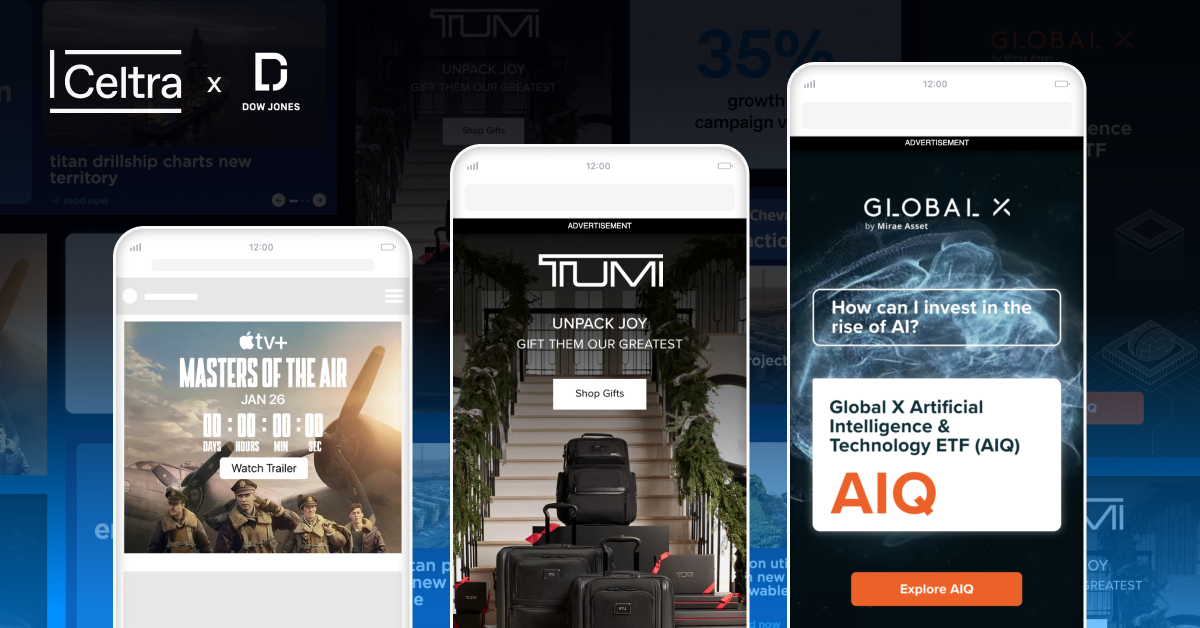Think of your all-time favorite ad. Whether it provoked laughter for days or instant goosebumps, one thing is certain — it caused a significant emotional response.
Digital is now all about the consumer experience. As such, a high level of creative relevance is essential. In the context of digital advertising, creative relevance is how well a brand can deliver messages that resonate to each consumer.
The method is long-proven effective. A remarkable 91% of consumers are more likely to shop with brands who provide relevant offers and recommendations. Likewise, in a new Forrester study commissioned by Celtra, 61% of marketers (the leading response) identified creative relevancy as their organization’s digital advertising creative goal for the next year.
How are the world’s biggest brands meeting creative relevance demands? How can you keep up? Let’s explore the basics.
What’s the dilemma?
When it comes to creative relevance, the most common obstacle looks like this:
- 1 big brand idea
- 5 or more different types of audience profiles
How can you translate that single story into approaches that stay true to the concept but also touch each audience? You’ll likely need more creative assets. Yet, reaching that level of output with your current resources and budgets may be challenging. At least if you’re planning to produce them manually.
To help clarify, here are a few examples of what tailoring for creative relevance means in practice.
- Varying product images that align with purchase history or consumer behavior
- Changing messaging by location — different weather conditions, points of interest, product availability, etc.
- Languages by region
- Showing images of different people for different audiences
Greater volume for greater variety
That’s where creative automation comes in. In order to make the massive volume of assets required, you need software that can handle the workload. Automating the production process cuts your speed-to-market in half.
It’s no secret either. The Forrester report revealed that 47% predicted a “positive impact” and 35% a “critical positive impact” from creative automation on improving creative relevancy. Clearly, brands are beginning to connect the dots. More volume means more opportunity to run precisely tailored stories to a variety of audiences.
Spotify’s “Discover Weekly” playlists are a terrific example of how more content can lead to a greater capacity for personalization. Here’s how it works — once Spotify has identified a few key markers of your taste, they’ll find similar profiles and playlists. From these other sources, they’ll compile a curated playlist. And how are they able to achieve the volume they need? Automated music recommendations.

Photo credit: Quartz
Audience-based messaging
Creative automation software also simplifies and streamlines internal collaboration. Creative, media, and marketing teams are able to work together on all assets in the cloud. Integrating or changing creatives is reflected in real-time. Plus, it eliminates the confusion of back-and-forth email chains with several versions.
Similarly, cloud-based collaboration lays the foundation for a better global-to-local approach. Central teams can design master templates that are handed off to local teams who can then resize, reformat, and personalize to suit their market. In the end, you’re looking at a campaign with both consistent branding and an understanding of context.
Nike’s one-minute “Outdo You” video campaign was widely recognized for using personalized content. Here’s how it worked: By distinguishing variations for a few data points, such as location, activity, and personal Nike+ data (e.g., user exercise patterns), they produced 10,000 unique videos. Ultimately, users were sent a video of either a female or male running through a familiar setting while personal (and insightful) data was presented.
When it comes to creative relevance, technology has evolved greatly beyond simple targeting and retargeting. It’s arrived at a place where automation and centralized workflows can dictate the impact of your message. Because once you have more content to work with, your opportunities to strategize are endless.
Discover more about maximizing your creative production so you can run a higher volume of relevant messages, by reaching out today.






